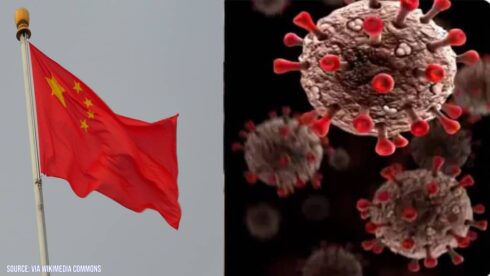China is currently navigating a significant health crisis as the Human Metapneumovirus (HMPV) spreads rapidly across its vast population. Health officials report a notable surge in infections, with symptoms closely mirroring those of COVID-19, including fever, persistent coughing, and breathing difficulties. The outbreak has alarmed Chinese authorities, who are implementing stringent measures to mitigate its spread. This sudden escalation has also drawn global attention, raising concerns about the virus’s potential to impact other regions.
Although HMPV is not a newly discovered pathogen—it was first identified in 2001—its widespread resurgence within China is unprecedented. Experts believe the combination of densely populated urban centers and the ongoing flu season has created a perfect storm for the virus to proliferate. The situation underscores the urgent need for enhanced monitoring and targeted interventions to contain the outbreak and safeguard public health.
Symptoms Triggering a Public Health Challenge
The symptoms of HMPV are compounding the burden on China’s healthcare system, which is already dealing with seasonal illnesses. Patients report a range of respiratory issues, from mild symptoms like congestion and fatigue to severe complications such as bronchitis and pneumonia, particularly in vulnerable populations.
With the virus mimicking the symptoms of COVID-19, hospitals are struggling to differentiate cases without advanced diagnostic tools. This has heightened anxiety among the population, leading to increased testing demands and further straining medical resources.
China’s Swift Response to the Crisis
In response to the escalating outbreak, the Chinese government has implemented stringent measures to control the virus’s spread. Major cities, including Beijing and Shanghai, have ramped up screening efforts, deployed mobile testing units, and enforced quarantine measures for suspected cases.
Additionally, the government has launched nationwide public awareness campaigns, emphasizing hygiene practices such as handwashing and mask-wearing. Chinese health officials are also collaborating with global experts to investigate the virus’s transmission dynamics and develop strategies to curb its impact.
Comparisons to COVID-19 Fuel Public Anxiety
The parallels between HMPV and COVID-19 have fueled widespread concern in China. Both viruses target the respiratory system and are capable of rapid transmission. However, experts reassure that HMPV has a lower fatality rate and has been known to medical science for decades, making it a manageable threat with proper intervention.
Despite these reassurances, public sentiment in China remains cautious. Citizens are taking preventive measures reminiscent of the early days of COVID-19, including stockpiling medical supplies and avoiding crowded spaces. Social media platforms are flooded with discussions, reflecting both fear and a demand for transparent communication from authorities.
Impact on China’s Economy and Travel Restrictions
The outbreak is also beginning to impact China’s economy, with disruptions reported in sectors like tourism and retail. Several international airlines have announced enhanced screening procedures for passengers traveling to and from China. Neighboring countries are monitoring the situation closely, with some imposing temporary travel restrictions to mitigate cross-border transmission.
Domestically, local governments are urging residents to limit travel, especially during the Lunar New Year period, traditionally a time of mass movement across the country. The measures aim to prevent HMPV from spreading to rural areas with limited healthcare infrastructure.
China’s Role in Developing Long-Term Solutions
China is mobilizing its scientific community to address the HMPV outbreak. Researchers are intensifying efforts to study the virus’s genetic structure and transmission pathways, with the aim of developing effective vaccines and antiviral treatments. Collaborative initiatives with international health organizations are also underway, leveraging global expertise to accelerate progress.
Health officials are emphasizing the importance of surveillance and early detection, urging citizens to seek medical attention at the first sign of symptoms. As the world watches, China’s response to this crisis will not only determine the outbreak’s trajectory but also set a precedent for managing similar health emergencies in the future.














